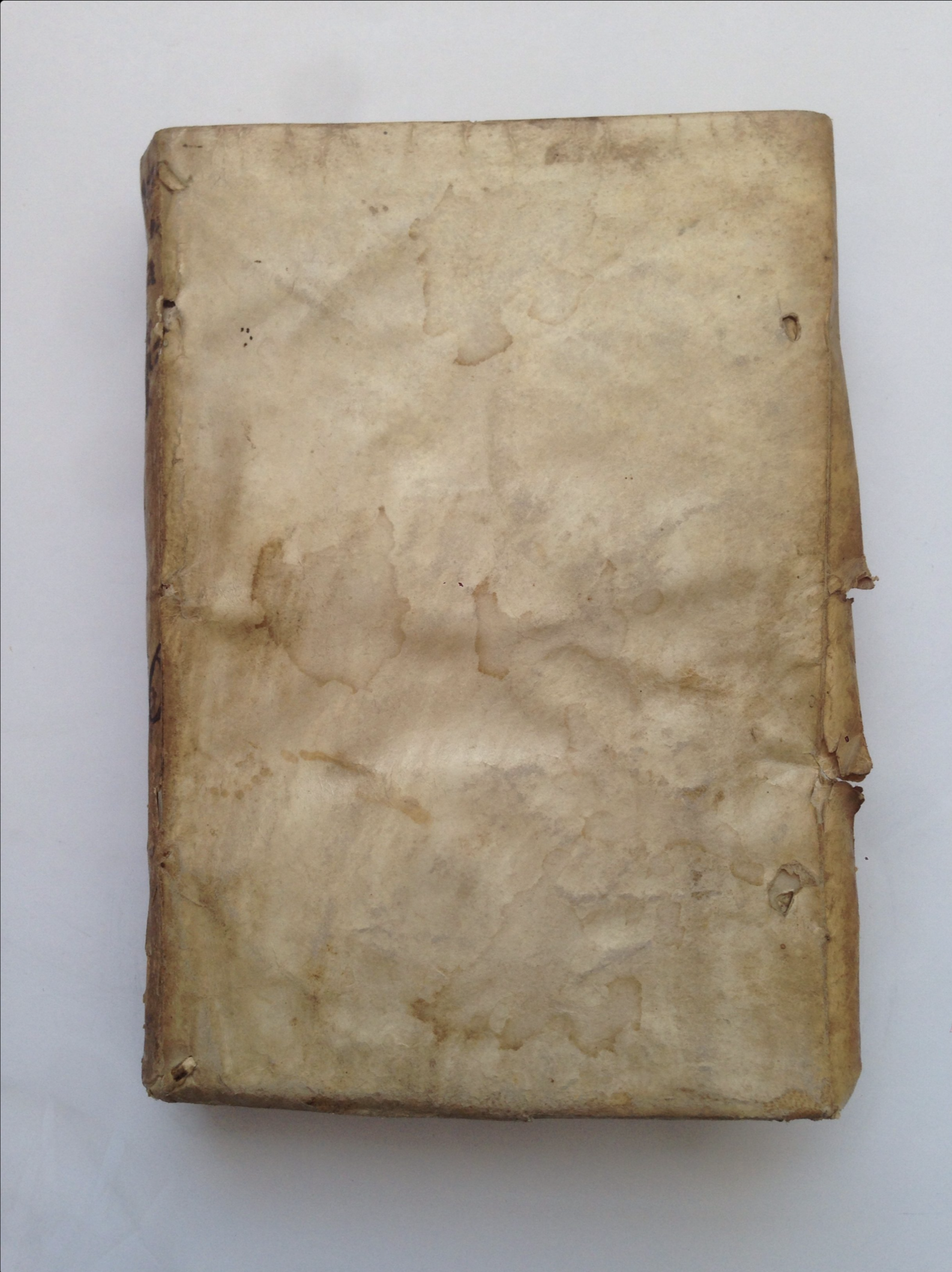MIRANDA de, Juan
Osservationi della lingua castigliana
Venice, Gabriel Giolito de’ Ferrari, 1566£2,950.00
FIRST EDITION. 8vo, pp. (32), 407, (1). Roman and Italic letter, text on single and double column, printed side notes, title cartouche and printer’s woodcut device on title page, historiated initials, typographical and decorative headpieces. Light age yellowing, the occasional light spot. A very good, clean copy in contemporary limp vellum, early ink title and shelf mark to spine, remains of ties, yapp edges, spine holed, vellum a bit rubbed. Early shelf mark to fly and Jesuit ex-libris in early hand to t-p.
Rare first edition, first issue, of this important Spanish grammar written for Italians by the religious Juan De Miranda, a writer and grammarian from Valladolid living in Venice, which served as a model to scholars from all over Europe and was reprinted several times, as being the most effective and complete early pedagogical grammar of Spanish written for speakers of other languages.
The address to the reader highlights the difficulties in learning Spanish and the usefulness of the work which deals with general morphology and some peculiarities of Castilian grammar and especially usage. It is divided into 4 parts: I, pronunciation and inflected parts of speech (article, noun, adjective and pronoun); II, the verb (regular and irregular) and its conjunction; III, the non-inflected parts of speech (adverb and prepositions) and a section on proverbs, anecdotes and short stories to illustrate colloquial Spanish; IV, orthography. Miranda’s grammar was influenced by Mario Alessandri D’Urbino’s “ Il paragone della lingua Toscana et Castigliana” (1560) but expanded on it. The work contains 2 indexes to help readers and explanations, given in plain and easy terms, are contrasted on the same page to the Tuscan language so the learner can easily understand rules, variants and similarities of Spanish. Of great interest is the book 3, where the author discusses Spanish conversation on various cultural topics (customs, clothing, knowledge, etc.) through short didactic examples according to three groups: comparisons, exclamations and particularly witty proverbs, largely using common words with ambiguous meaning, such as “loco” (mad), “judio” (Jewish), in relation to the concept of honour, and “necio” or “moro” (Moorish, ignorant). The selection is significant, showing peculiar aspects of politics and culture of Spanish society. Miranda refers to Castiglione’s “Cortegiano” and Girolamo Garimberto’s “Concetti divinissimi” (1551), as models of learned conversation for courtiers, politicians and scholars, and recounts real episodes that happened in Venice at that time to notable Spaniards, such as Giovanni de Spinosa, secretary to the Emperor Carlo V. The comments on pronunciation provide valuable data for chronologies of sound change.
No copies of this edition recorded in the US and the second edition only at Kansas and Illinois. Not in Brunet or Graesse. Adams, M 1470 (ed. 1567); BM STC It., 440.In stock








